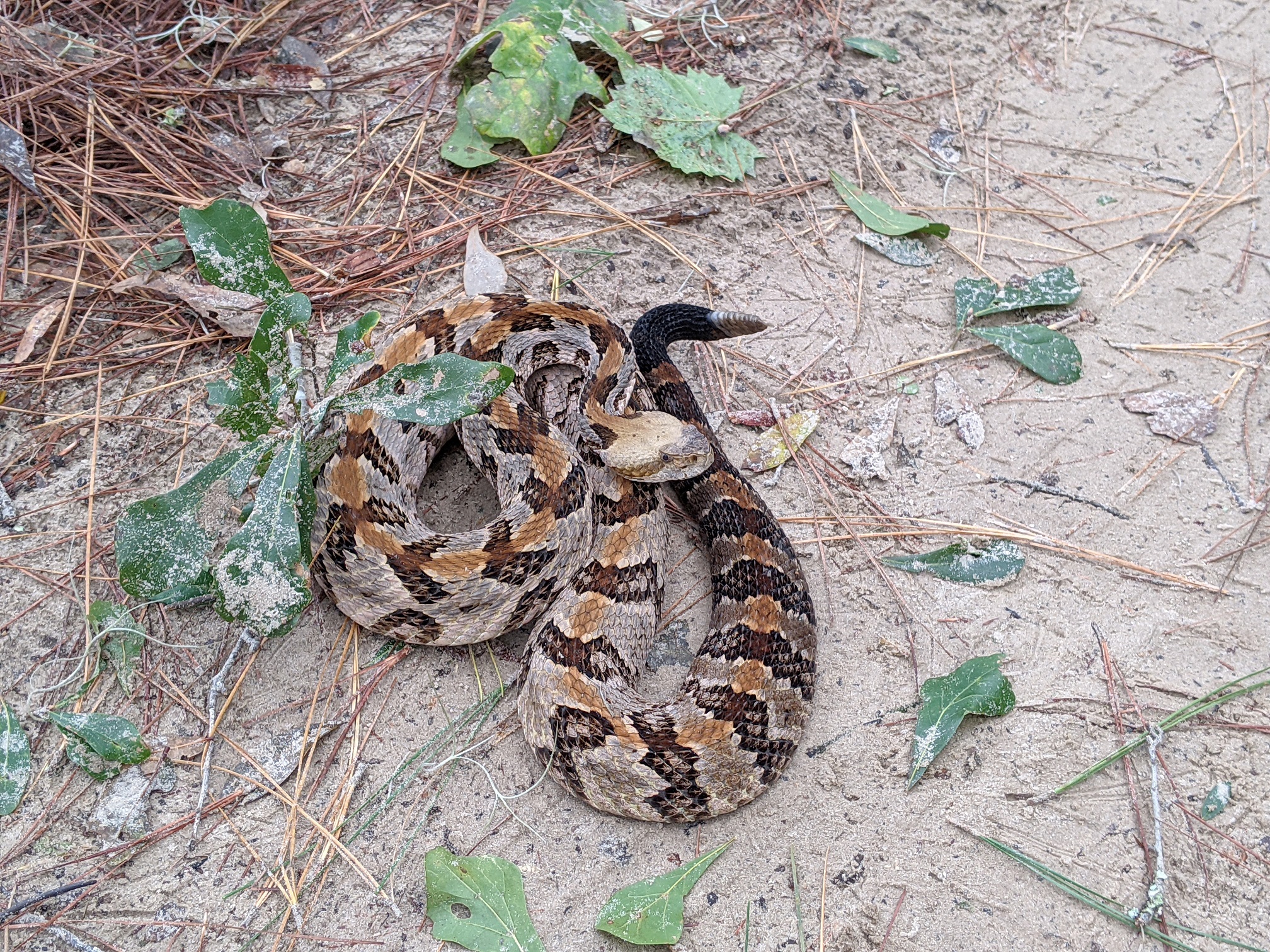
This week for Flora and Fauna Friday is everyone’s favorite group of scaly, maraca-wielding sausages: the Rattlesnakes of genera Crotalus and Sistrurus.
Here in the Lowcountry we have three species of Rattlesnake belonging to two genera: Canebrake Rattlesnake (Crotalus horridus), Eastern Diamondback Rattlesnake (C. adamanteus), and Pygmy Rattlesnake (Sistrurus miliarius). All are venomous, stout, mainly nocturnal, and can see body heat. Their toxic teeth lend well to similar lifestyles of ambush hunting but all have carved out a special niche.
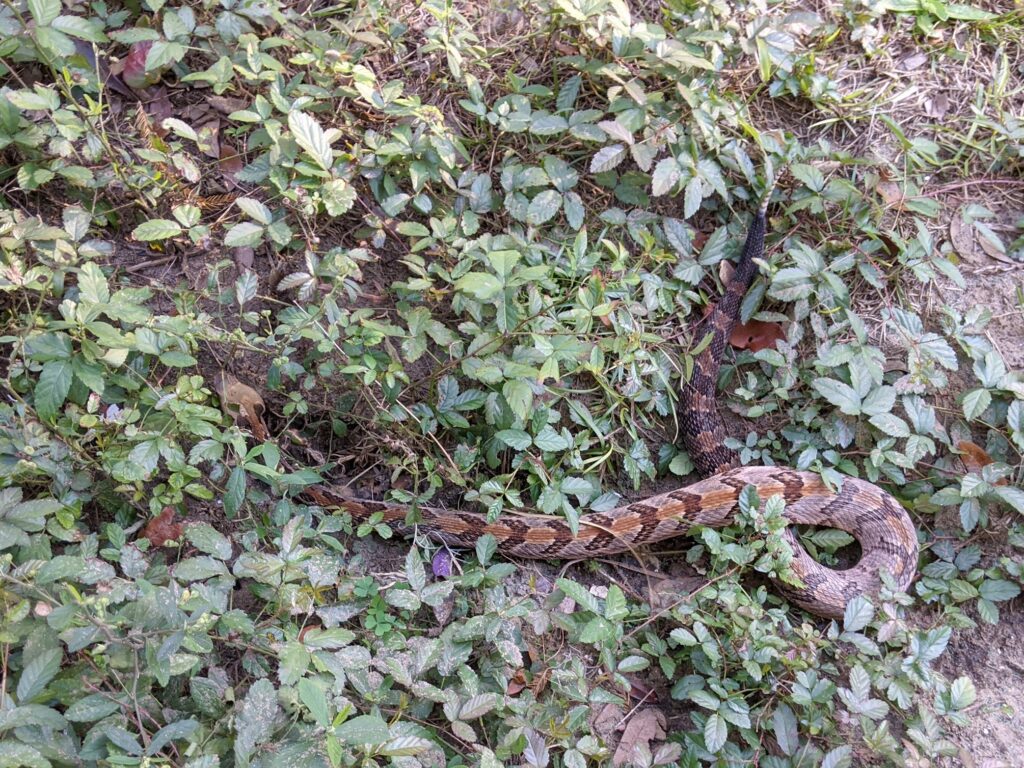
The Canebrake Rattlesnake, AKA Timber Rattlesnake, is our most common Rattlesnake and can reach five feet long. Their scales are a brassy-gray across leading to a black tail tip with dark jagged rings around their belly and a rusty stripe down their spine. Canebrakes are widespread throughout our woodlands, thickets, and fields. Their diet is primarily mice, rats, squirrels, and rabbits but they will eat what they can catch, even other snakes. Timber Rattlesnakes usually smell out a mammal’s favorite footpath and then set up shop on the shoulder. When the critter finally passes by, hours, days, or weeks later, their infrared sensing pits let them seize it in a heartbeat, even in pitch darkness. The Canebrake’s venom is deadly. So you should try and avoid getting bit when out in the bush! Luckily, Canebrakes have a fairly laid back demeanor and hardly react to the presence of humans, except to rattle their tail when they’re cruising by, just to let you know they’re watching you. Rattlesnake rattles are made of hollow interlocking pieces of keratin. A rattle is added when the snake sheds its skin.
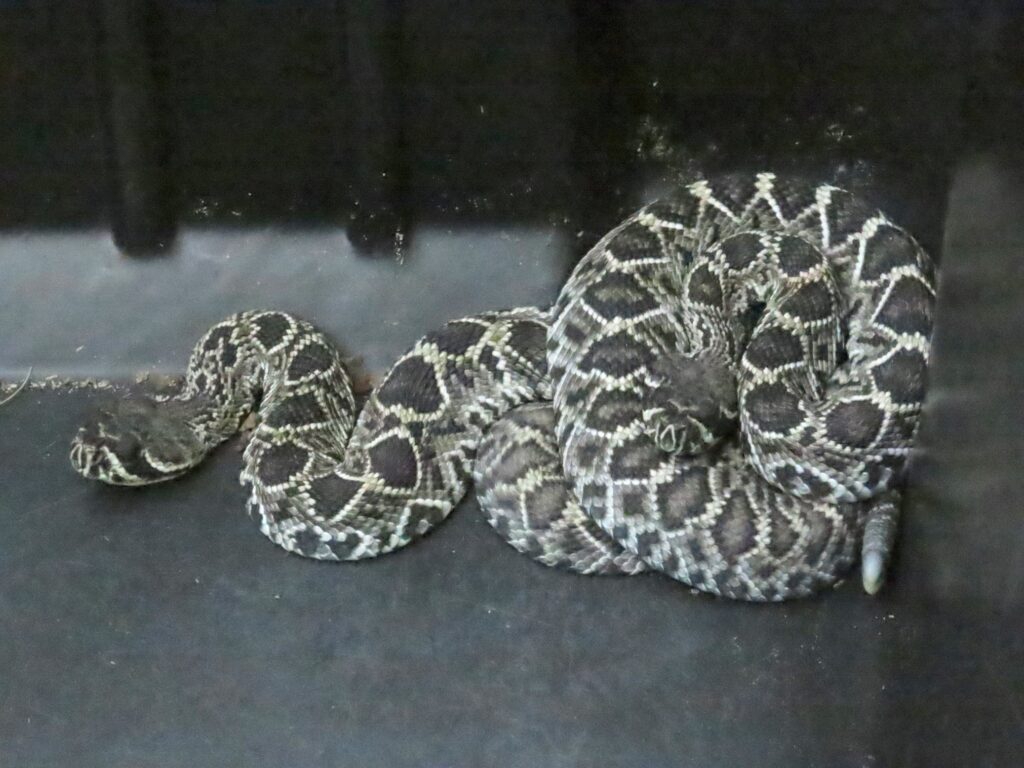
The Eastern Diamondback Rattlesnake is our largest venomous snake at up to seven feet long and a contender for the world’s heaviest venomous snake. They’re a species of conservation concern in South Carolina due to habitat destruction and human persecution. Their scales are tan and brown leading to a black tail tip and studded down the top with black diamonds bordered by white. Diamondbacks are most common on barrier islands and in pine savannas. They are strong swimmers as well, allowing them to cross between islands. Fox and Gray Squirrels, among other furry critters, are their favorite foods. Their method of ambush is the same as that of the Canebrake but their attitude is more defensive. Some Diamondbacks are quick to rattle and will shortly coil up, head held high, to signal that they mean business. This is mostly for show as they will usually only feint biting when approached. However, they have the most potent bite of any snake in North America, so this display is no bluff. Don’t get near a Diamondback unless you’re a trained professional!
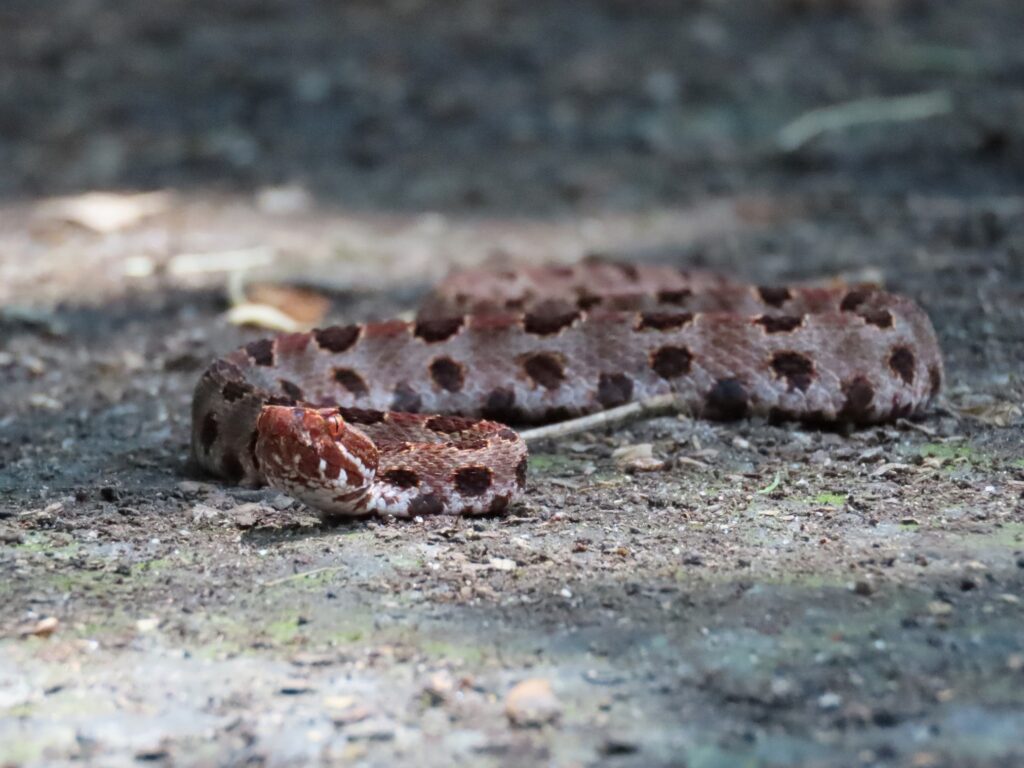
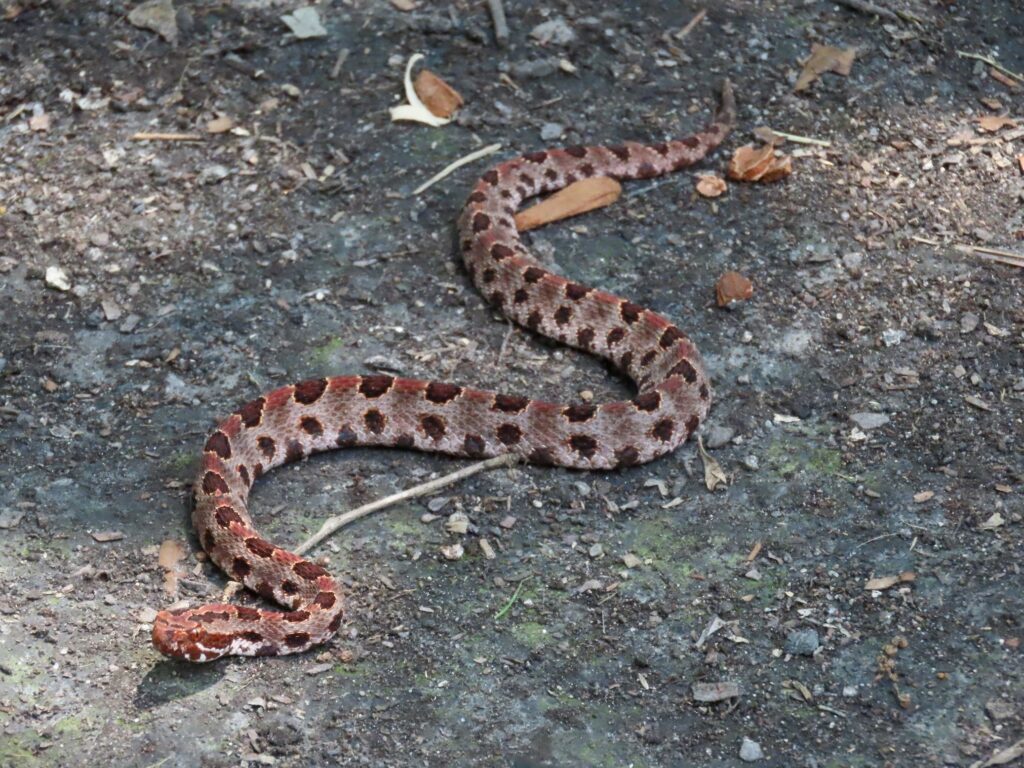
The Eastern Pygmy Rattlesnake is our smallest viper, at under two feet in length. They have pinkish-gray scales accented by small, dark, blocky-blotches and a rust-red stripe down the spine. Pygmies are most common in our pine forests, especially our flatwoods, and often hang out around freshwater wetlands. Like its two larger cousins, Pygmies are ambush hunters but mainly prey on small mammals, lizards, frogs, and insects. Unlike the larger rattlers, the Pygmy Rattlesnake doesn’t have much of a rattle and so it relies mainly on its camouflage to keep it out of harm’s way.
Rattlesnakes are a group of reptiles who want nothing more than to be left in peace. The number one cause of snake bites in the US is deliberately trying to handle or kill a snake. Although they can pose a hazard to energetic pets and carefree children, a Rattlesnake has no innate desire to bite people. They’re just a wild animal trying to get by without getting harassed. Venom is their last line of defense and they can’t guarantee it will save them. Think about it. A snake to a Bobcat or Coyote is just an angry kielbasa with scales. It looks like dinner. A snake without venom poses no threat. Even still venom takes minutes to take effect. Plenty of time to become something’s last meal. A Rattlesnake wants to make you aware that it is there so you will go elsewhere. It won’t touch you if you don’t touch it. So let the snakes be. Put the shovel down, holster the ratshot, drive around them, and for crying out loud don’t try and pick them up!